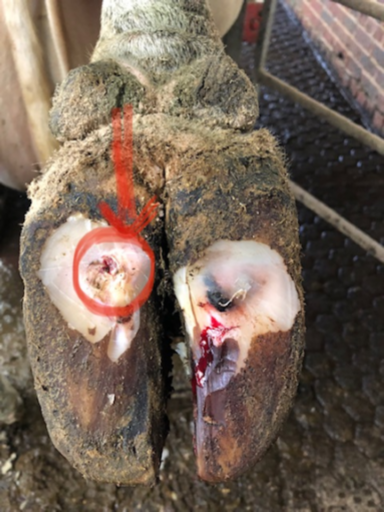have seen a couple of cases in herds where I do the mobility scoring of presumed heat stress (and the resulting behaviour of cows) contributing to an increased prevalence of lameness cases. Essentially, 2 herds which were on top of lameness have both had a bit of a flare up in lameness cases. Both are autumn calving and have had cows predominantly housed this summer owing to the heat and lack of grazing availability. These will be common features for many of you out there and I thought it worthwhile to share what we are finding in these herds, and what we are doing to intervene in case it rings any bells with any of you.
Cows are strange beasts. Their response to heat stress isn’t necessarily what you would think. The hard-wiring in a cow’s brain is still very much that of an animal living out on the savannah somewhere. They bunch together in the darker parts of sheds (seeking shade), they reduce their lying/resting times (as they get hotter when lying down), reduce rumination and increase overall activity. So, in general, it’s a bad thing, but the crucial bit that I want to focus on is the lying times. Cows get hotter when lying down, so in hot weather they stand up more to try and cool down. If they do lie down, they lie down for much shorter bursts of time (bouts). In terms of foot health this puts a lot more strain on the feet. If you add to that all the changes that are happening around calving (the impact of relaxin hormone on the position of the pedal bone, weight loss and reduced fat cushioning in the foot and change of housing/new cubicles for heifers) it is no surprise that we talking about a very high risk period for bruising. Bruising then leads to sole ulcers – which are very difficult to completely ‘cure’. In addition we see another lesion that seems to be associated with heat stress – the bulb ulcer (or heel ulcer, or sole fracture). If you are seeing these (either yourself or on your trimmer’s report) then it is likely that your standing times have been disrupted.
So what can you do? Its probably too late to try and achieve heat stress relief (for this year – certainly you need to think about it for next year) but you can try and intervene with your footcare now. A combination of preventive trimming of cows in early lactation and regular mobility scoring to identify early lameness is crucial. With your early lactation trims I think from 80 days is about right. This includes heifers. It’s really important that your trimmer doesn’t take too much away though. Modelling of the sole ulcer site is often all that is needed. If there is a risk of over-trimming then its probably better to do nothing at all! The regular mobility scoring is crucial as we can pick up early bruising, before a sole ulcer has developed if we watch cows carefully enough.
I know this is a busy time for many of you but be aware that this has been a tricky year and you may need to react accordingly if lameness is getting away from you

